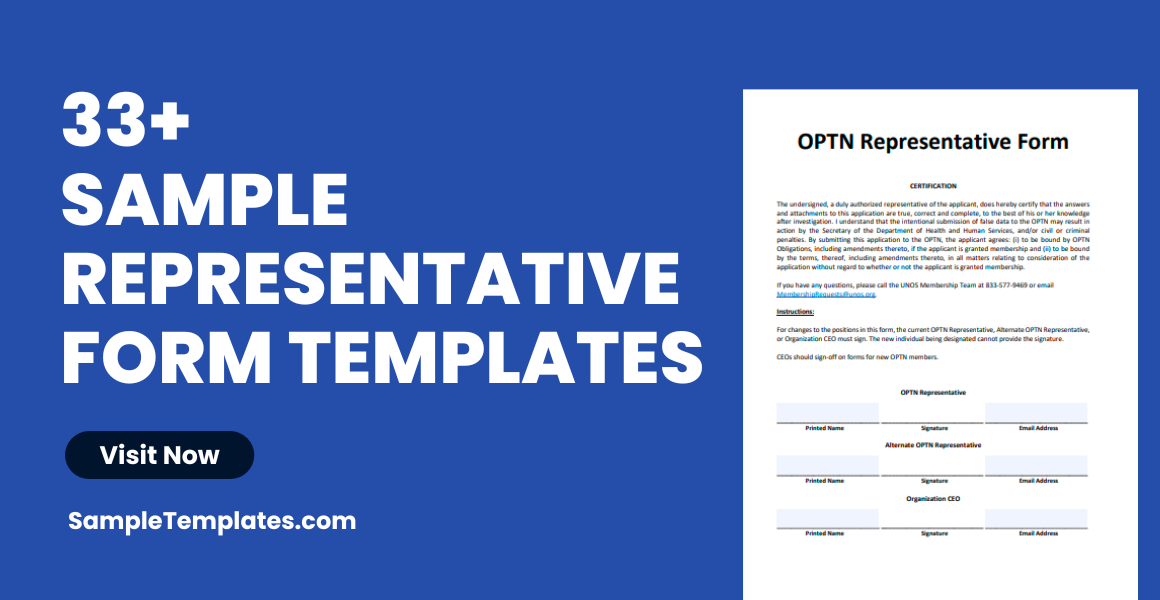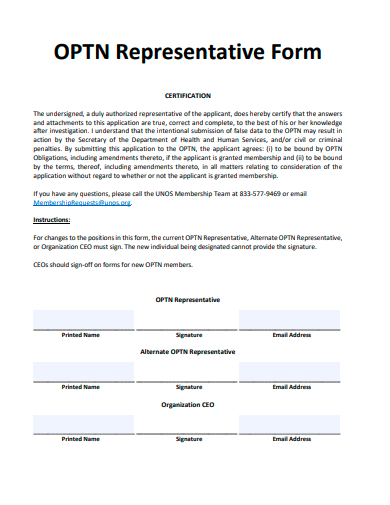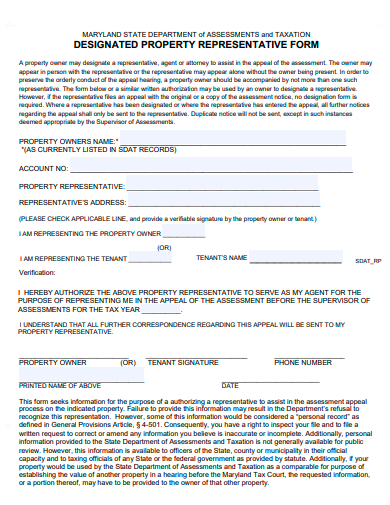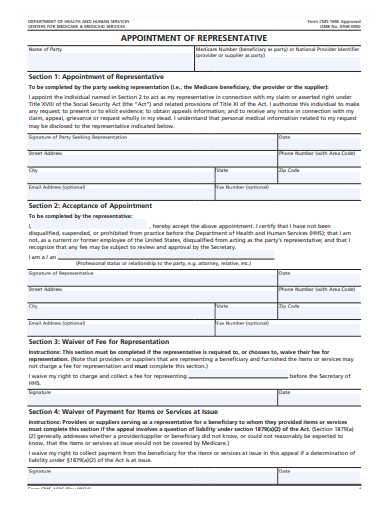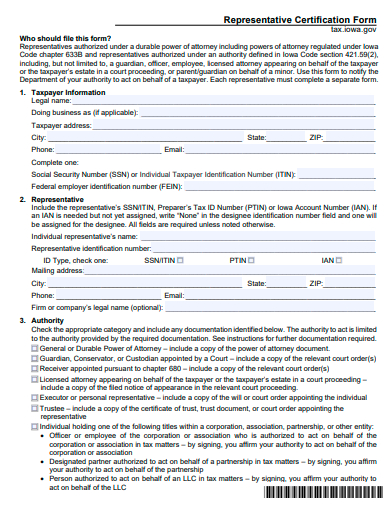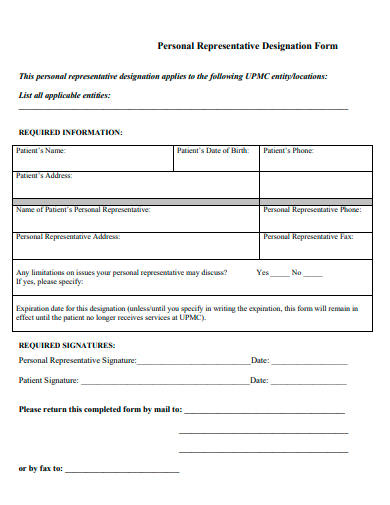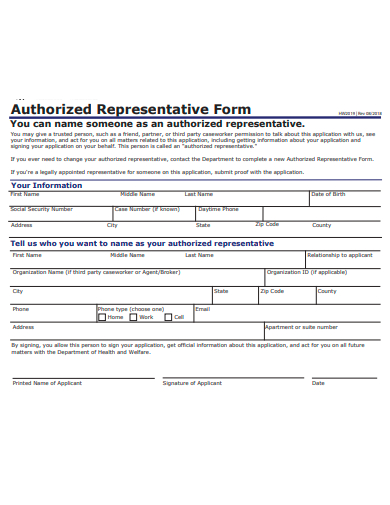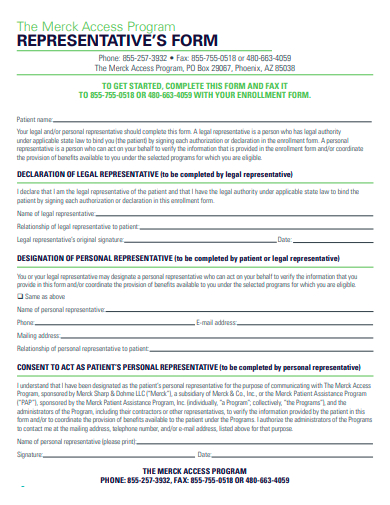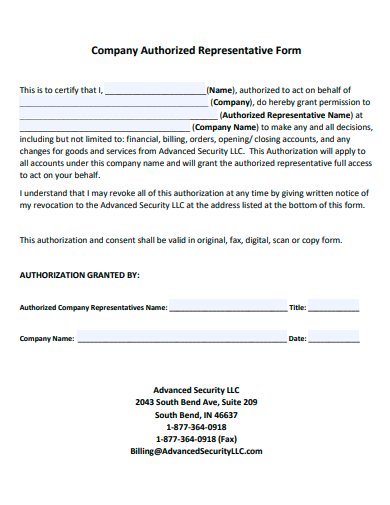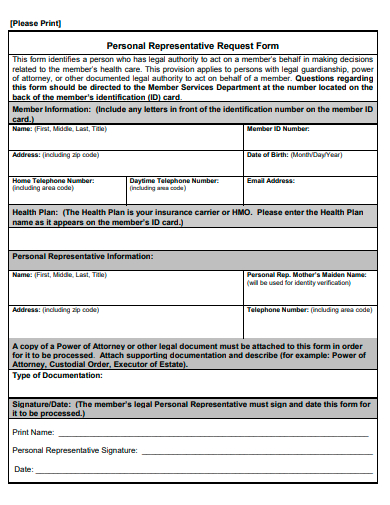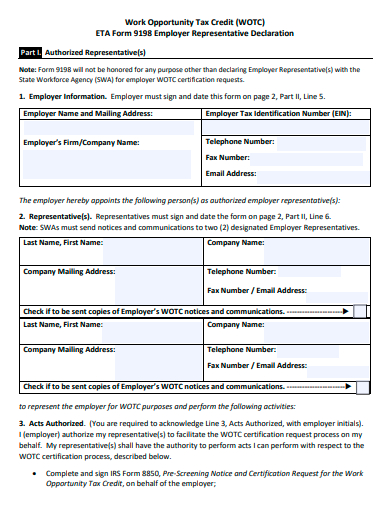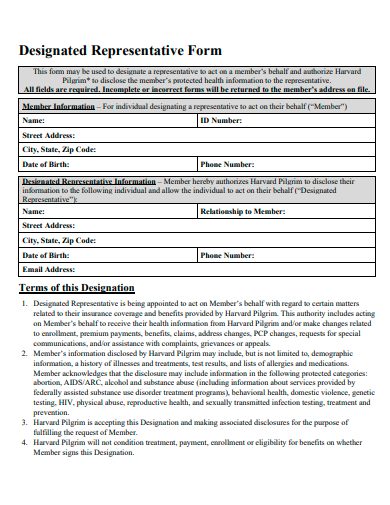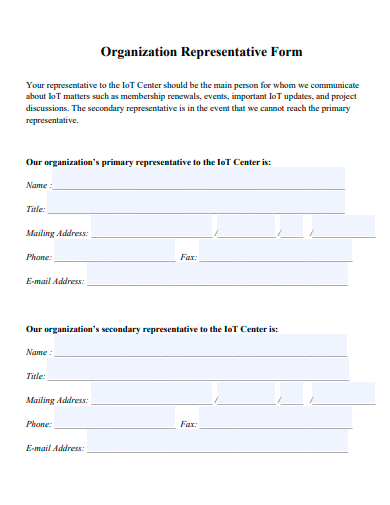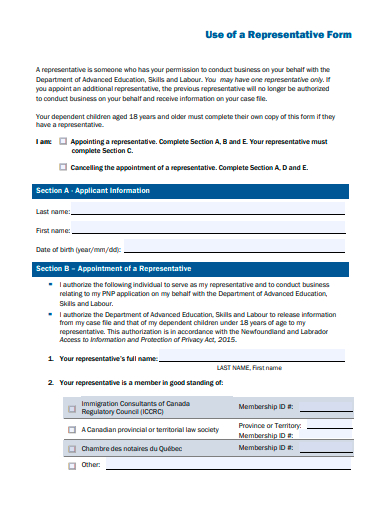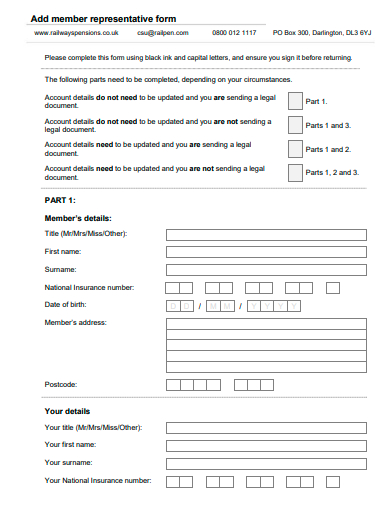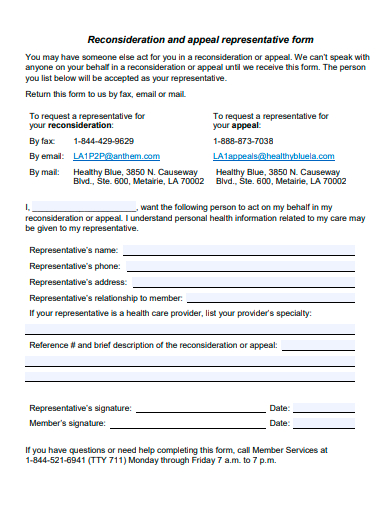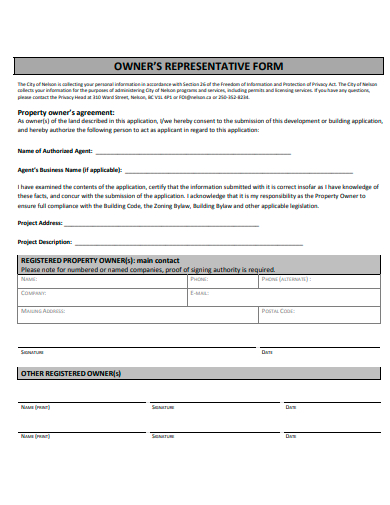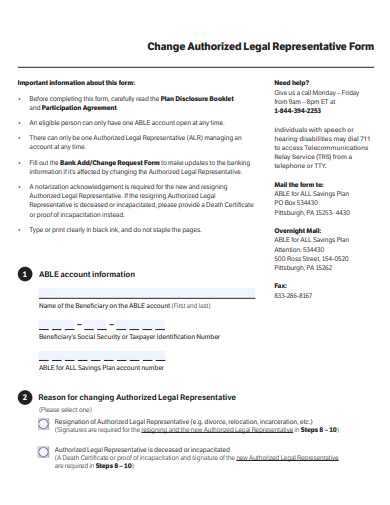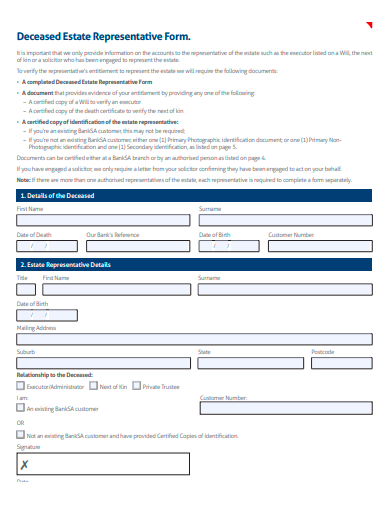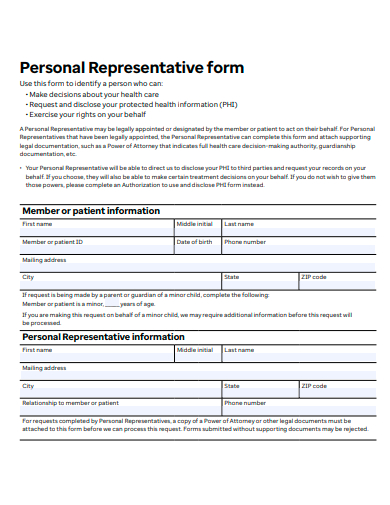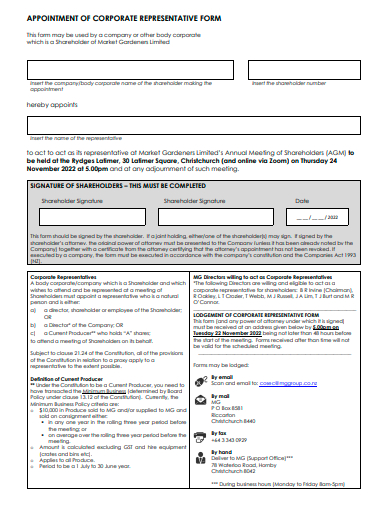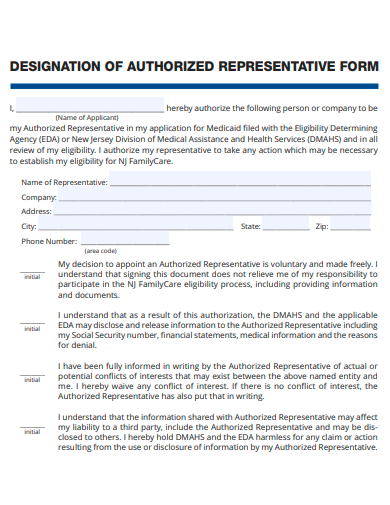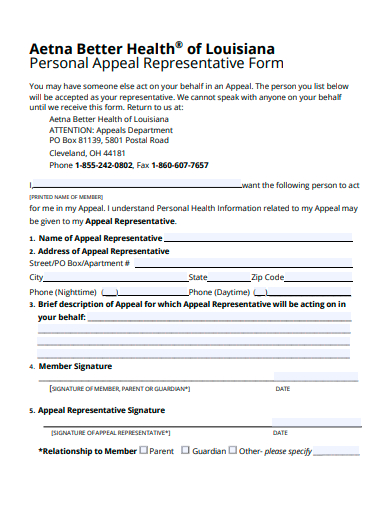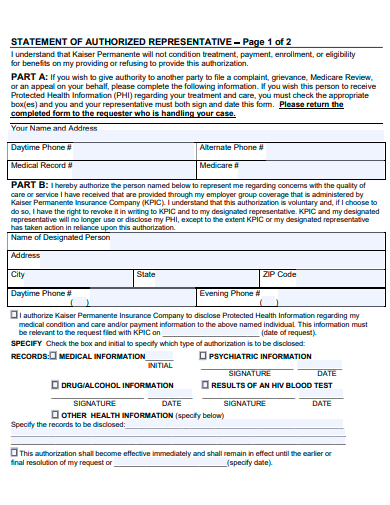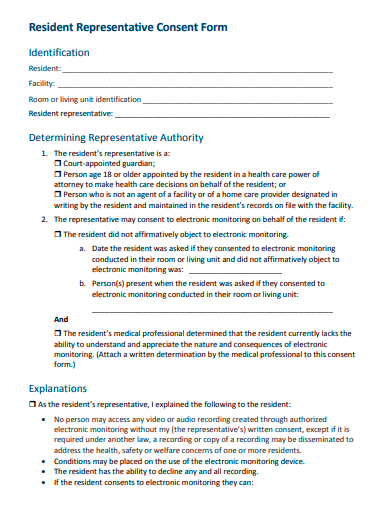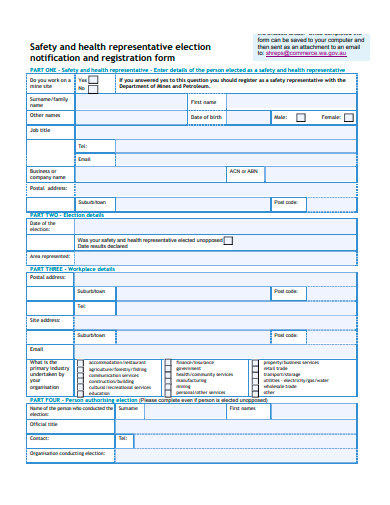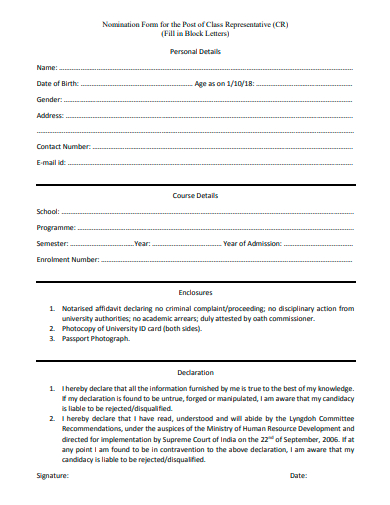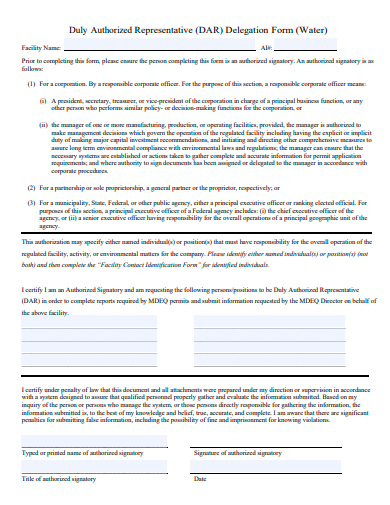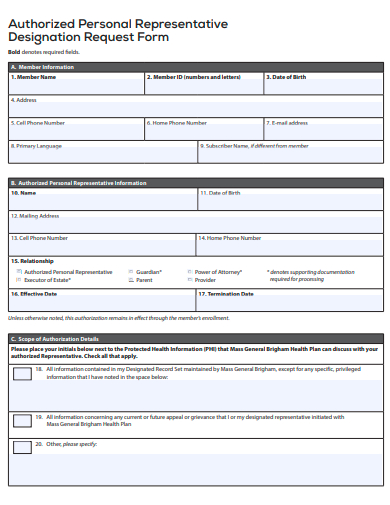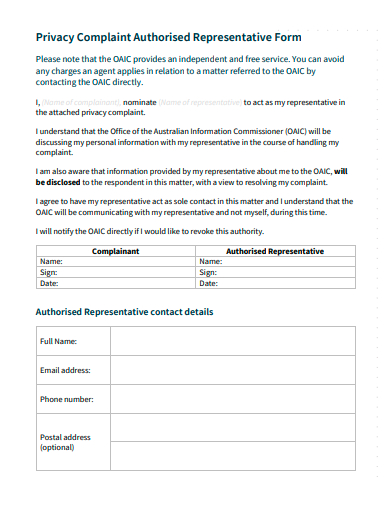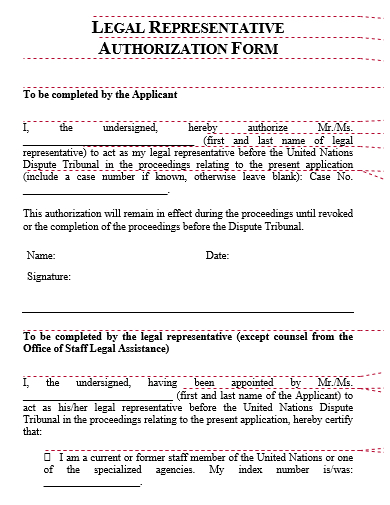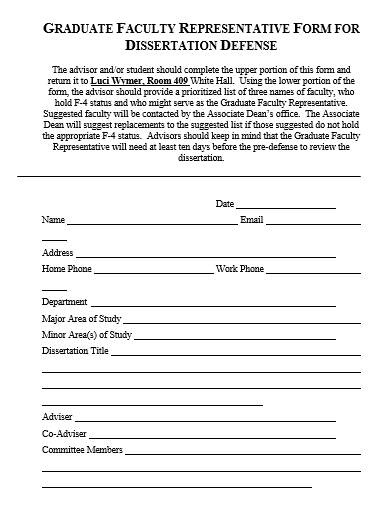Introducing our versatile Sample Representative Form Template! This professionally designed and user-friendly template is the perfect solution for creating representative forms tailored to your unique needs. Whether you’re in the corporate world, legal field, or any other industry, this template is your go-to resource for crafting comprehensive and efficient form sample. It simplifies the process and ensures you capture all the necessary data. Streamline your documentation today with our Sample Representative Form Template, and save valuable time and effort.
33+ Representative Form Samples
1. Representative Form Template
2. Designated Property Representative Form Template
3. Appointment Representative Form Template
4. Representative Certification Form Template
5. Personal Representative Designation Form Template
6. Authorized Representative Form Template
7. Basic Representative Form Template
8. Company Authorized Representative Form Template
9. Personal Representative Request Form Template
10. Employer Representative Declaration Form Template
11. Designated Representative Form Template
12. Organization Representative Form Template
What Is a Representative Form?
A representative form, often referred to as a representative agreement sample or authorization form, is a legal document used to appoint an individual or entity to act on behalf of someone else in various matters. This delegation of authority can encompass a wide range of responsibilities and is commonly utilized in both personal and professional contexts.
Here’s a comprehensive exploration of what a representative form entails:
Purpose and Scope:
A representative form serves the fundamental purpose of designating a representative, agent, or proxy to make decisions, perform tasks, or access information on behalf of the person granting the authority. The scope of this authorization can vary significantly and is typically outlined within the form itself.
Types of Representative Forms:
Representative forms come in various types, depending on their intended use. Some common examples include:
Power of Attorney (POA): This form authorizes an agent to manage financial, legal, or medical affairs on behalf of the grantor.
Healthcare Proxy: It allows an individual to appoint someone to make healthcare decisions if they become incapacitated.
Parental Consent Form: Often used for minors, this Consent form grants permission for a designated individual to make decisions for the child.
Proxy Voting Form: Used in corporate settings, it empowers shareholders to designate someone to vote on their behalf in company matters.
Key Elements of a Representative Form:
A representative form typically includes the following key elements:
Identification: Details of both the grantor and the appointed representative, including names, addresses, and contact information.
Scope of Authority: A clear description of the specific task list, decisions, or powers granted to the representative.
Duration: The timeframe during which the representative’s authority is valid, which can be specific or ongoing.
Revocation: Provisions outlining how the grantor can revoke or amend the representative’s authority.
Witnesses and Notarization: In many cases, representative forms require signatures from witnesses or notarization to enhance their legal validity.
Importance and Use Cases:
Representative forms play a crucial role in legal and personal matters by ensuring that someone can act on your behalf when you are unable or unwilling to do so. Some common scenarios where these forms are essential include:
Medical emergencies or incapacity, where a healthcare proxy can make critical decisions about treatment.
Business transactions, with a power of attorney authorizing someone to manage financial affairs or sign contracts.
Travel consent for minors, allowing a designated adult to make decisions when parents are not present.
Corporate settings, enabling shareholders to have their interests represented in voting or decision-making processes.
Legal Implications:
It’s essential to understand that representative forms have legal implications. Grantors should carefully consider their choices and ensure that they fully comprehend the scope and consequences of delegating authority to a representative. Legal advice is often recommended when drafting or executing these forms to avoid misunderstandings or disputes.
In summary, a representative form is a versatile legal document that empowers individuals to delegate authority to trusted representatives in various aspects of life. Whether it’s for healthcare, legal matters, or business transactions, these forms provide a structured and legally recognized means of ensuring that important decisions and actions can be carried out in the grantor’s absence or incapacity. Understanding the types and implications of representative forms is crucial for anyone considering their use in personal or professional contexts.
13. Member Appeals Authorized Representative Form Template
14. Printable Representative Form Template
15. Member Representative Form Template
16. Reconsideration and Appeal Representative Form Template
17. Owners Representative Form Template
18. Member Appeal Representative Form Template
19. Change Authorized Legal Representative Form Template
20. Deceased Estate Representative Form Template
21. Consent for Authorized Representative Form Template
22. Personal Representative Form Template
23. Appointment of Corporate Representative Form Template
24. Designation of Authorized Representative Form Template
25. Personal Appeal Representative Form Template
How to create a Representative Form?
Creating a representative form, also known as an authorization form or power of attorney, involves several steps to ensure that the document is legally binding and serves its intended purpose. Here’s a comprehensive guide on how to create a representative form:
Define the Purpose:
Start by clearly defining the purpose and scope of the representative form. Determine what specific tasks or decisions the appointed representative will have the authority to handle on your behalf. Common purposes include medical decisions, financial management, or legal matters.
Research Applicable Laws:
Research the laws and regulations in your jurisdiction that pertain to representative forms. These laws can vary significantly from one place to another, and it’s essential to ensure your document complies with local legal requirements.
Choose the Type of Representative Form:
Select the type of representative form that aligns with your specific needs. Common types include:
General Power of Attorney: Grants broad authority to act on your behalf in financial and legal matters.
Limited Power of Attorney: Specifies a limited scope of authority for the representative, often for a specific task or a defined period.
Healthcare Proxy: Authorizes someone to make medical decisions on your behalf if you become incapacitated.
Parental Consent Form: Allows parents to grant temporary authority to another adult for decisions regarding their children.
Identify the Parties Involved:
Clearly identify and provide the full legal names, addresses, and contact information for both the grantor (the person delegating authority) and the appointed representative. Ensure accuracy to avoid any potential issues with the document’s validity.
Define the Scope of Authority:
Detail the specific tasks, responsibilities, or decisions that the representative is authorized to handle. Be explicit in defining the limits of their authority to prevent any misunderstandings.
Determine the Duration:
Specify the duration of the representative’s authority. You can make it effective immediately, upon a specific date, or upon the occurrence of a certain event. Ensure that the timeframe aligns with your needs.
Include Revocation Clause:
Include a revocation clause that outlines how the grantor can revoke or amend the representative’s authority. This ensures that you have control over the delegation of authority.
Witnesses and Notarization:
In many jurisdictions, representative forms require signatures from witnesses and notarization to make them legally valid. Check your local laws to determine the specific requirements for witnessing and notarizing the document.
Consult Legal Advice:
Consider consulting an attorney or legal expert to ensure that your representative form complies with all relevant laws and regulations. They can also provide guidance on drafting the document to meet your specific needs.
Distribution and Storage:
Provide copies of the representative form to relevant parties, such as your appointed representative, healthcare providers, or financial institutions, as necessary. Keep the original document in a safe and easily accessible place, and inform trusted individuals of its location.
Periodic Review:
Periodically review and update the representative form as needed. Life circumstances and preferences may change, and it’s essential to ensure that the document remains current and reflective of your wishes.
Creating a representative form is a crucial step in legally delegating authority to someone you trust. Taking the time to draft a clear and legally sound document ensures that your wishes are honored in various situations, from medical emergencies to financial management. Always seek legal advice to ensure that your representative form complies with local laws and serves your best interests.
26. Statement of Authorized Representative Form Template
27. Resident Representative Consent Form Template
28. Formal Representative Form Template
29. Representative Nomination Form Template
30. Duly Authorized Representative Delegation Form Template
31. Authorized Personal Representative Designation Request Form Template
32. Privacy Complaint Authorised Representative Form Template
33. Legal Representative Authorization Form Template
34. Graduate Faculty Representative Form Template
How to Use our Representative Forms?
Using representative forms effectively involves understanding the purpose, scope, and legal implications of the document. These forms are designed to delegate authority to another person or entity, and here’s how to use them:
Determine the Type of Representative Form:
Identify the specific type of representative form that suits your needs. Depending on the purpose, you may need a power of attorney for financial matters, a healthcare proxy for medical decisions, or a parental consent form for child-related decisions.
Choose a Trusted Representative:
Select a trustworthy individual or entity to act as your representative. This person should be reliable, responsible, and capable of carrying out the designated tasks or decisions in your best interest.
Complete the Representative Form:
Carefully fill out the representative form, providing accurate information about both the grantor (you) and the appointed representative. Be clear and specific about the scope of authority, duration, and any limitations on the representative’s powers.
Witnesses and Notarization:
Check the legal requirements in your jurisdiction regarding witnesses and notarization. Many representative forms require signatures from witnesses and notarization to validate the document. Follow the legal guidelines to ensure its legality.
Distribute Copies:
Provide copies of the completed form to relevant parties as necessary. For example:
Financial Matters: Give a copy to your appointed financial agent and notify financial institutions where they will be acting on your behalf.
Healthcare: Provide a copy to your healthcare proxy and inform your healthcare providers.
Childcare: Share a copy of a parental consent form with the responsible adult when entrusting them with your child’s care.
Inform Trusted Individuals:
Inform trusted individuals, such as family members or close friends, about the existence of the representative form and its location. This ensures that your wishes are known in case of emergencies.
Periodic Review:
Regularly review and update the representative form as needed. Life circumstances can change, so it’s important to ensure that the document reflects your current wishes and preferences.
Use in Accordance with the Document:
Once the representative form is in effect, the appointed representative should act in accordance with the document’s instructions and within the specified scope of authority. They must always prioritize your best interests and follow any legal requirements.
Revocation if Necessary:
If you need to revoke or amend the representative’s authority, follow the process outlined in the representative form. Typically, this involves providing written notice to the representative and relevant parties, such as financial institutions or healthcare providers.
Seek Legal Advice When in Doubt:
If you have questions or encounter complex situations, it’s advisable to consult with an attorney or legal expert. They can provide guidance on using the representative form effectively and in compliance with applicable laws.
Using representative forms is a valuable tool for ensuring that your wishes are carried out when you are unable or unwilling to make decisions on your own. By understanding the type of form you need, choosing a trusted representative, and following legal requirements, you can use these documents effectively to delegate authority and protect your interests in various aspects of life.
Related Posts
Sample Sworn Affidavit Forms
Vehicle Inspection Forms Samples & Templates
Sample Employee Advance Forms
Sample Child Travel Consent Forms
Sample Testimonial Request Forms
Sample Employee Details Forms
Sample Divorce Forms
Sample Attestation Forms
Employee Performance Appraisal Form Templates
FREE 9+ Sample Presentation Evaluation Forms in MS Word
FREE 10+ School Admission Form Samples & Templates in MS Word | PDF
FREE 30+ Patient Consent Form Samples in PDF | MS Word
FREE 10+ Sample Sign Off Form Templates in PDF | MS Word
FREE 11+ Sample Medical Consultation Forms in PDF | MS Word
FREE 8+ Sample Donation Forms in PDF | MS Word
